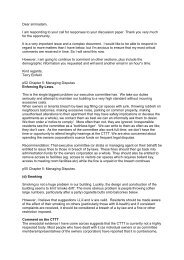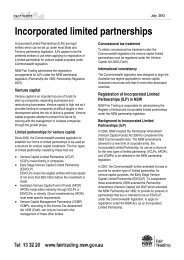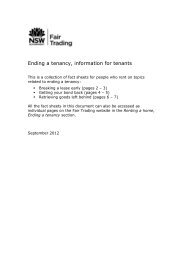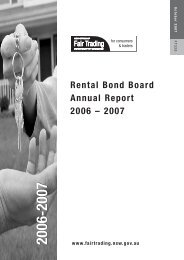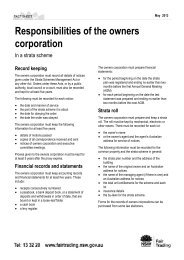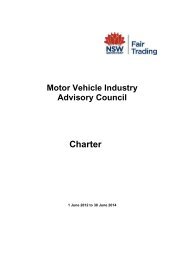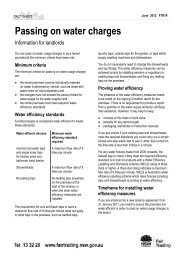High front guttering advisory committee report - NSW Fair Trading ...
High front guttering advisory committee report - NSW Fair Trading ...
High front guttering advisory committee report - NSW Fair Trading ...
Create successful ePaper yourself
Turn your PDF publications into a flip-book with our unique Google optimized e-Paper software.
sits below higher level performance requirements. Of note, the Standard only represents one<br />
pathway for meeting performance requirements, not the only pathway. In contrast, the Code of<br />
Practice calls up AS3500 in a more prescriptive way that does not allow alternative methods of<br />
construction – compliance with AS3500 is the only way. Here, the Code of Practice itself provides no<br />
specific, direct guidance on the design and installation of <strong>guttering</strong> and so it is only via AS3500 that it<br />
offers any content in terms of gutter related issues at all.<br />
As a result of this situation, it was apparent that the role of AS3500 had to be clarified because of<br />
the potential level of importance it held in defining a “systemic problem”. It was apparent to the<br />
Committee that the only means of resolving this was to determine whether the BCA or the Code of<br />
Practice was a more appropriate regulatory framework with respect to the regulation of <strong>guttering</strong> in<br />
New South Wales.<br />
As a result, the Committee sought a formal opinion on the issue – as provided by the Deputy<br />
Commissioner, <strong>Fair</strong> <strong>Trading</strong> Operations. It is included in Appendix C of this <strong>report</strong>. In summary, the<br />
opinion states that the BCA is the dominant and most appropriate regulatory framework to apply to<br />
<strong>guttering</strong> work. This is based on <strong>guttering</strong> (roof plumbing) being defined as “building work”. In<br />
addition;<br />
• The Environmental Planning and Assessment Regulation 2000 states that building work<br />
requires development consent (including complying and exempt development) and must be<br />
carried out in accordance with the BCA.<br />
• The Home Building Act 1989 regulates and licenses <strong>guttering</strong> as “residential building work”<br />
with the BCA forming part of the requirements for quality of construction.<br />
• The Water Authorities that empower the use of the Code of Practice as a regulatory<br />
document are not mandated to, and do not actively, regulate <strong>guttering</strong> installation work.<br />
Given the above, a “systemic problem” in high <strong>front</strong>ed <strong>guttering</strong> is henceforth defined in terms of<br />
work not meeting performance requirements in the BCA. This includes attention to:<br />
• New Housing construction (referred to as Class 1 building work in the BCA)<br />
• The replacement of gutters in existing housing (such work is considered “new work” under<br />
the EPA regulation and as advised by Planning <strong>NSW</strong>).<br />
• The words “systemic problem” be taken to indicate a high predictability of failure - as<br />
evidenced by sufficient quantifiable evidence to be statistically significant. This notably<br />
deviates from random or isolated project failures.<br />
Further to the above there is a need to set boundaries concerning the scope of the <strong>guttering</strong> system<br />
and its interface with other building systems. In this context, the investigation deals with the<br />
function of high <strong>front</strong>ed gutters and the exit of water from those gutters into downpipes. The<br />
investigation does not include the performance of adjoining systems such as stormwater pipe<br />
systems and rainwater storage tanks except to the extent that the under-design of such systems may<br />
result in backflow which may cause gutters to overflow. Examples mentioned to the Committee on<br />
this issue included:<br />
• Unworkable stormwater outfall – this example concerned stormwater from a dwelling that<br />
discharged into a lagoon prone to tidal action - high tides created sufficient reverse pressure<br />
11



